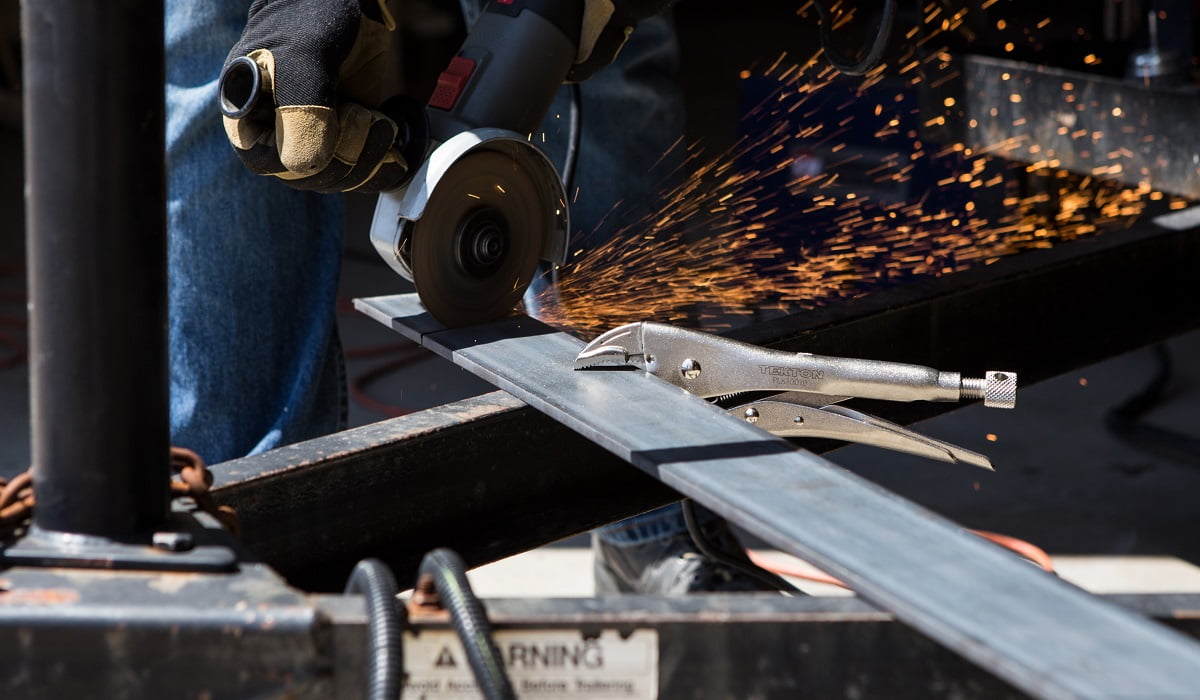Although quite similar in their functions, angle grinders and polishers offer unique things. They vary widely in terms of speed, accuracy, weight, making them suitable for different jobs around your home or workshop.

If you’re into DIY construction and renovation, you’d know that the best angle grinder can perform multiple tasks like cutting, deburring, etc. But the question that arises is- can it be interchanged with a polisher? And can these tools perform the same tasks?
To help you understand better and to assist you in making the right pick, we are here to decode the differences between these two tools. Once you know their basic features, you will be able to put them to the best use.
What Are Angle Grinders And Polishers?

Before we take you through the differences that set these two tools apart, let us first give a brief description of what these power tools do.
Angle grinders are extremely popular for cutting tiles and stucco and grinding metal. However, that's not the only use of angle grinders- you can also consider using them for sharpening, polishing metal, and sanding a variety of materials. They come with a handle and a spinning disc to get the job done.
There are different types of cutting discs which are suitable for different tasks and materials. For example, if you’re looking to cut tiles with an angle grinder, do your research to understand which angle grinder disc for tiles will be the best.
On the other hand, a polisher is an absolute must in a workshop for smoothing the surface of different materials. It comes with a leather strap or work wheel that moves at high speed to smoothen out the surface it’s being used on.
Both an angle grinder and a polisher might look pretty similar at the first go. However, these two tools are quite different, and we are going to tell you why.
Angle Grinder Vs Polisher - The Major Differences
1. Speed
When it comes to speed, both the tools actually fare quite well. However, a classic angle grinder is a lot faster and offers more torque when compared to a polisher.
This is possible because an angle grinder is mainly suited to handle much bigger projects that a polisher cannot. For instance, you can use an angle grinder to cut metal and pavers. But keep in mind that the load speed of this tool is pretty high, and you might face some trouble if you are new to using it.
For beginners, a variable speed angle grinder is the best bet. Such a model will offer a speed range, and you can select the one that you are comfortable working with.
2. Ease Of Use
While polishers that come with consistent polishing speed are quite easy to handle, dual-action polishers can be a hard nut to crack. Unless you have prior experience, managing the different angles of the head present on these polishing tools can be quite a challenge.
And the same holds true when you are using a rotary buffer. Although it's a very useful tool, you will need to spend some time knowing how to operate it well.
The common angle grinder, on the other hand, is a powerful tool that is quite easy to handle. Unlike a polishing machine, the single head present on an angle grinder makes it super easy to handle for beginners. And once you learn a bit about speed control, you're good to go!
Moreover, most angle grinders come with detailed instruction manuals, so you can always refer to them in case of any query or confusion. A pro tip:, if you want to know "how to remove angle grinder wheel without tool?” then check out our website.
3. Movements
Both angle grinders and polishers display varying movements, but using an angle grinder is comparatively pretty straightforward. This is because it only spins clockwise and will not surprise you with any unexpected movements.
But, when it comes to dual-action polishers, things are a bit different. They come with a pad that functions in a slightly angled motion to ensure that the surface you are polishing lasts longer. However, you can rest assured that they will not create swirls or damage the surface you are working on.
4. Accuracy
If you are working on a wood or metal surface and accuracy is not of prime concern, using an angle grinder will be the best bet. You can easily cut through different surfaces in quick time using this tool.
However, if you need intricacies in the work, an angle grinder may not be of much help. When you are targeting the inner corners and delicate engravings, we suggest going for a polisher instead.
5. Weight
The weight of a tool is of great consideration, especially when you are a beginner. Both angle grinders are polishers, aren't too heavy and can be easily handled by both professionals and DIY enthusiasts.
That said, the exact weight of these two devices will depend on the model you are using. For example, rotary grinders are relatively heavier when compared to their other counterparts.
Hence, you should always take the weight of the tool into consideration before making any decision. If you use a tool that is too heavy, your work time will only get prolonged.
Is It Possible To Convert An Angle Grinder Into A Polisher?
The benefits of a polisher are many, and we won’t judge you if the thought of converting an angle grinder into a polisher crosses your mind! In fact, you would be happy to know that it can be done fairly easily without requiring a lot of your time, effort, or money.
To get this done effectively, begin by removing the angle guard that is present on the angle grinder. This plastic guard basically covers the sharp blade of the grinder when it is not in use. Once you locate it, you will need to detach the guard from the main body of the angle grinder.
After that, proceed to install the required polishing head (according to the task to be undertaken). Once this head is attached to the body of the grinder, you can then install the pad to the Velcro back of the head. And that's pretty much it! You can then test out the tool to see if it is functioning correctly.
A word of caution here- no matter which tool you use, always begin working at a slow speed and take your time to get adjusted to it. Angle grinders, in particular, run at high speed and can be difficult to tackle unless you are used to them.

Difference Between An Angle Grinder And A Polisher Final Words
With that, we will leave you to the task of picking the right one for your needs (or including both).
But before we wrap up, here’s a quick recap. If you’re looking for a tool with more power, an angle grinder can come to your rescue.
However, if you are more focused on precision, we suggest opting for a polisher. Furthermore, both these tools are suitable for polishing jobs, but it's best that you choose one that is tailor-made to your needs.
If you liked this read, you should take a look at our new entry, "what direction do fans blow"? And for more interesting reads, always keep a watch on this space.
Until next time!
